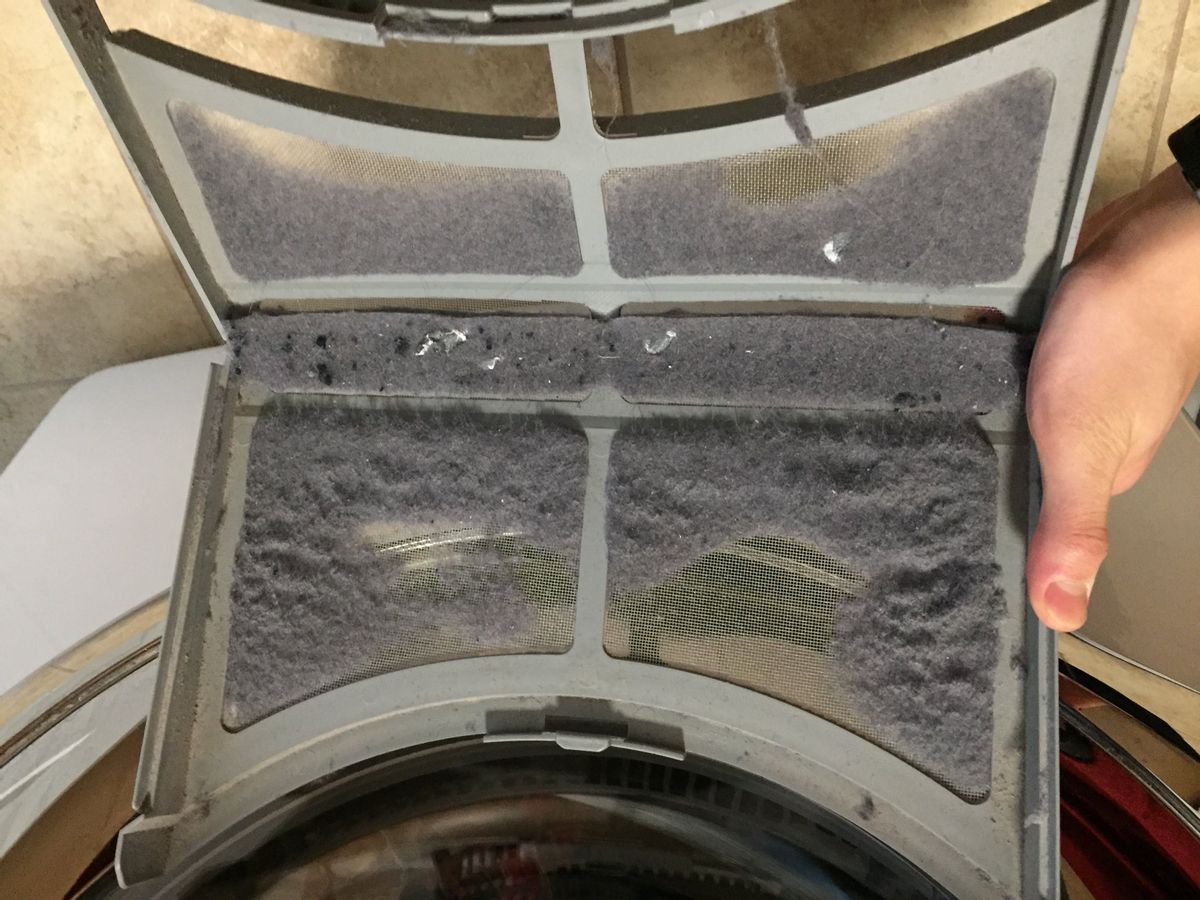There are a number of devices and appliances that have been standard household items in American homes since before most of us were born. Electric irons, dishwashers, vacuum cleaners, gas (or electric) stoves and ovens, washing machines, and clothes dryers are but a few of the many labor-saving devices so familiar to many of us that we seldom ponder just how they work. Ask the average person, for example, how a clothes dryer works, and you'll probably get an "Are you kidding me?" look in return, along with a terse explanation that a dryer makes stuff "hot," and everybody knows stuff dries faster when it's hot.
That explanation isn't technically wrong (as far as it goes), but it's overly simple. Knowing a bit more about the process involved is the key to understanding why the advice to keep your dryer's lint filter clean can help improve the performance of your clothes dryer.
In a standard (gas) dryer, a fan pulls fresh air into the dryer and sends it flowing over a gas burner. The burner heats the air, which is then channeled into a tumbling drum where the wet clothes are held. The heat, air flow, and tumbling motion all contribute to evaporating the moisture held in the fabrics, and that moisture is absorbed by the gas-warmed air. (Warm air is capable of holding more moisture than cold air.) The warm air — and the moisture it now holds — passes through a filter to trap lint and other particulate matter stirred up by its movement and is vented to the outside so that it can be replaced with new, less-moist air. This process repeats until enough moisture has been evaporated and carried away for the clothes to be considered sufficiently "dry."
Of course, if you neglect to clean the lint filter between dryings, or something else occludes the filter, moist air cannot be vented from the dryer as easily. The result will be that your dryer will work less efficiently: you will have to run your dryer longer to dry a load of clothes, which means higher electricity and gas charges for you and a potentially shorter lifespan for your dryer:
I had a wonderful morning, the heating unit went out of my dryer! Why does everything seem to fall apart this time of year!???
The guy that fixes things went in to the dryer and pulled out the lint filter. It was clean. We always clean the lint from the filter after every load of clothes. He told us that he wanted to show him something. He took the filter over to the sink and ran hot water over it. Now, this thing is like a mesh — I'm sure you know what your dryer's lint filter looks like — WELL ... the hot water just laid on top of the mesh!!! It didn't go through it at all!!!
He told us that dryer sheets cause a film over that mesh and that's what burns out the heating unit. You can't SEE the film, but it's there. He said this is also what causes dryer units to catch fire and potentially burn the house down with it! He said the best way to keep your dryer working for a very long time (and to keep your electric bill lower) is to take that filter out and wash it with hot soapy water and an old toothbrush (or other brush) at least every six months. He said that makes the life of the dryer at least twice as long! How about that? Learn something new everyday!
I certainly didn't know dryer sheets would do that. So, thought I'd share!
Note:
I went to dryer and tested my screen by running water on it. The water collected a little but ran though the screen. I dried it off and was ready to put it back in the dryer since the water ran through it but, I thought was the heck it won't hurt to wash it while I had it out. Warm soap water and a nylon brush and I had it done in
30 seconds. I then ran the water over the screen and what a difference the water just gushed through it with no puddling at all and this time I was running the water at a faster rate. That repairman knew what he was talking about.
So, keeping the lint filter clean is one simple way to increase the efficiency (and decrease the operating costs) of your dryer. Just removing the lint from the filter isn't always enough: the fine mesh of most dryer filters can be clogged in ways that aren't obvious at a casual glance. As suggested by the piece quoted above, softener sheets can cause waxy
Although regular cleaning of the lint trap may help your dryer to work more efficiently, it's unlikely that the lack of such cleaning will result in your dryer's motor burning out or, worse, catching on fire and burning your house down. Consumer Reports noted of this claim that:
At Consumer Reports we've tested hundreds of clothes dryers for our ongoing dryer Ratings and recommendations. CR's appliance director, Mark Connelly, says it's possible that over a long period, fabric sheets, fabric softeners, and laundry detergent ingredients contribute to an unseen film or waxy buildup on the dryer lint screen. But "it's highly doubtful," he said, "that any such invisible buildup alone leads to heating-unit burnout or a fire."

